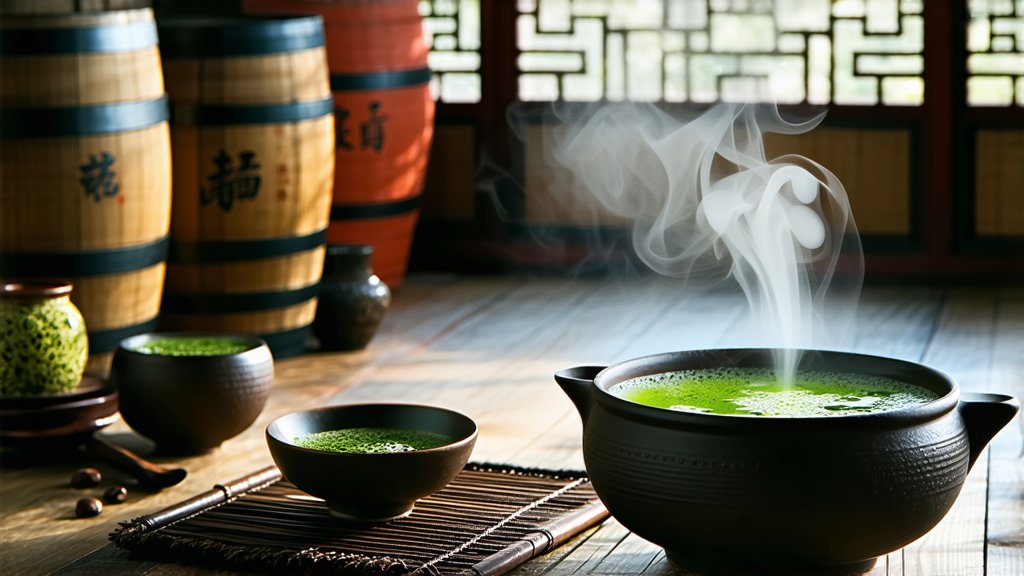
Pu-erh tea, a gem within the vast spectrum of Chinese dark teas, stands as a testament to centuries of tradition, culture, and meticulous craftsmanship. Originating from the Yunnan province, this unique tea has captivated the hearts and palates of tea enthusiasts worldwide, earning its reputation as a living tea that matures with age, much like fine wine. In this exploration, we delve into the rich history, diverse varieties, intricate production process, and the art of appreciating Pu-erh tea.
A Historical Odyssey
The story of Pu-erh tea dates back over a thousand years to the ancient caravan routes that connected Yunnan with Tibet and other parts of Asia. These trade routes, later known as the Tea Horse Road, facilitated not just the exchange of goods but also ideas, cultures, and, significantly, tea. It was along these paths that Pu-erh tea first made its journey, evolving into what we know today. The name "Pu-erh" itself is derived from the market town of Pu'er in Yunnan, where this tea was traditionally processed and traded.
Varieties & Classifications
Pu-erh tea is broadly categorized into two main types: Raw (Sheng) and Ripe (Shou). Each type undergoes a distinct aging process, resulting in unique flavors and characteristics.
-
Raw Pu-erh (Sheng): Made from sun-dried maocha (partially oxidized tea leaves), Sheng Pu-erh is known for its potential to age and transform over time. Young Sheng teas typically exhibit astringent, greenish hues with a robust, vegetal taste, while aged versions develop deeper, more complex notes reminiscent of earth, wood, and sometimes even hints of dried fruit or flowers.
-
Ripe Pu-erh (Shou): This variety undergoes a post-fermentation process called 'wet piling' or 'wo dui', which accelerates the aging process through controlled microbial activity. The result is a mellower, darker tea with a smoother texture and a distinctive earthy aroma. Ripe Pu-erh is often enjoyed for its immediate drinkability and consistent quality across different batches.
The Art of Craftsmanship
The journey from leaf to cup involves several stages, each contributing to the final character of the tea:
-
Picking: Only the tenderest buds and leaves are handpicked during specific seasons to ensure optimal flavor and quality.
-
Withering & Sun Drying: Freshly picked leaves are spread out to wilt under the sun, reducing moisture content and initiating enzymatic reactions that contribute to flavor development.
-
Fixation: The leaves are briefly heated to halt oxidation, preserving their green color and freshness.
-
Rolling & Shaping: Rolling releases juices within the leaves, enhancing flavor extraction during brewing. The leaves may then be shaped into various forms such as cakes, bricks, or tuochas (nestled cakes).
-
Drying: The shaped teas are dried again to remove excess moisture, setting the stage for long-term storage and aging.
-
Aging & Fermentation: For Sheng Pu-erh, natural aging in cool, dry environments allows gradual transformation over years or even decades. Shou Pu-erh undergoes the additional step of wet piling, where piles of tea are kept humid and warm to foster microbial growth, accelerating the maturation process.
The Art of Appreciation
To truly savor Pu-erh tea is to engage in a meditative ritual that celebrates its complexity and depth. Here’s how to approach a session:
-
Preparation: Use a Yixing clay teapot or a Gaiwan (a lidded bowl) for optimal brewing. Rinse the leaves briefly with hot water to awaken their flavors.
-
Brewing: Steep the leaves in water just off boiling point (around 95°C/203°F) for the first few infusions, gradually increasing steeping time with each subsequent brew. This method ensures a balanced extraction and reveals the tea's evolving profile.
-
Observation: Note the color of the liquor, which ranges from pale yellow for young Sheng to deep red-brown for aged Shou. The aroma should be evaluated both in the dry leaf and while sipping.
-
Tasting: Pay attention to the tea's body, astringency, sweetness, and aftertaste. A good Pu-erh will offer a harmonious balance between bitterness and sweetness, leaving a pleasant, lingering sensation.
-
Reflection: Take time to appreciate the subtle nuances that emerge with each infusion, allowing the tea to tell its story through every sip.
Health Benefits
Beyond its sensory pleasures, Pu-erh tea has been revered for its potential health benefits. Rich in antioxidants, it is believed to aid digestion, promote weight loss, improve cardiovascular health, and boost the immune system. Regular consumption is also said to support oral health and contribute to mental clarity and relaxation.
In conclusion, Pu-erh tea is not merely a beverage; it embodies a profound cultural heritage and a philosophy of life that cherishes patience, transformation, and the beauty found in simplicity. As you embark on your own journey with this remarkable tea, remember that each cup holds within it a universe of flavors waiting to be discovered and appreciated.